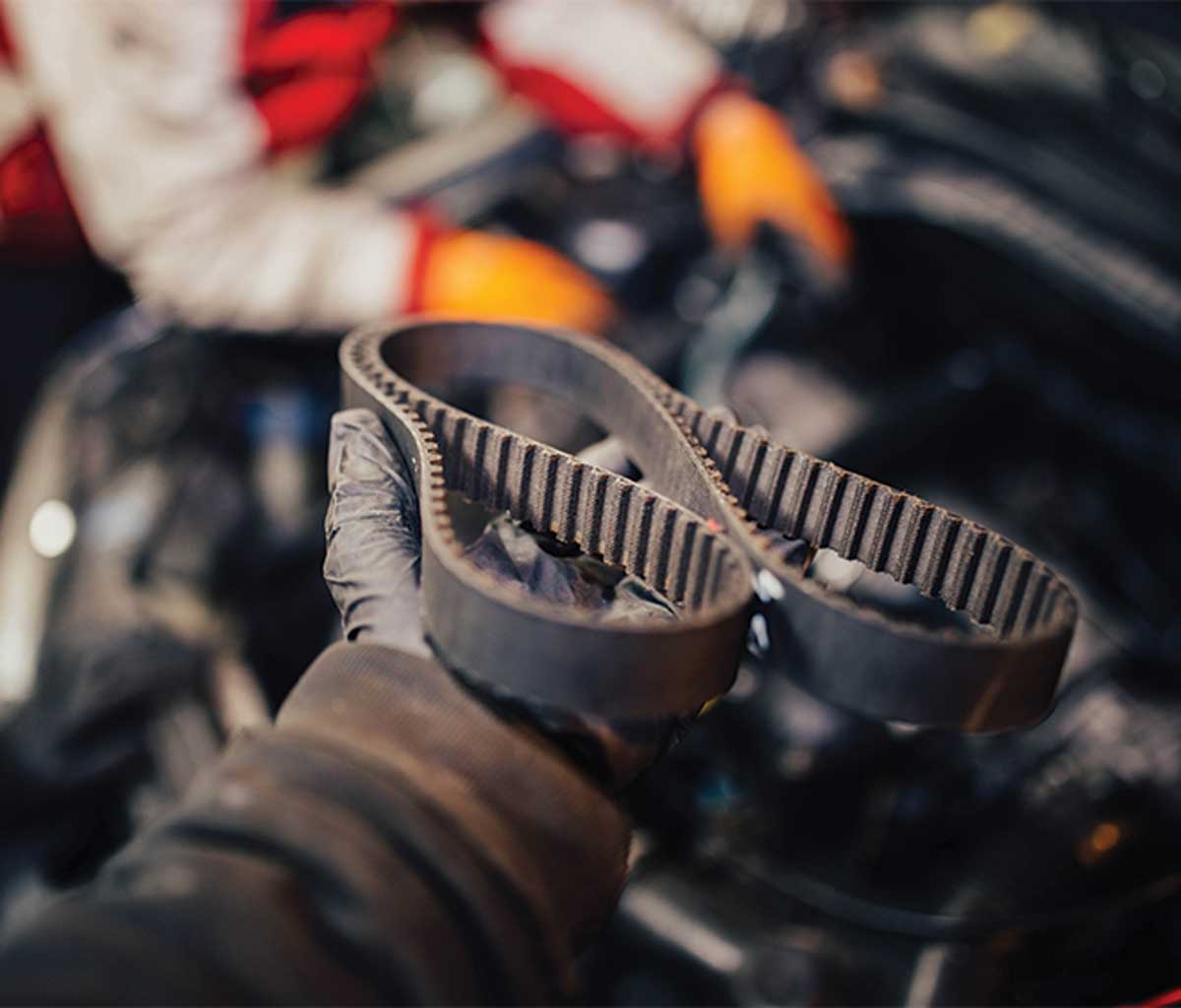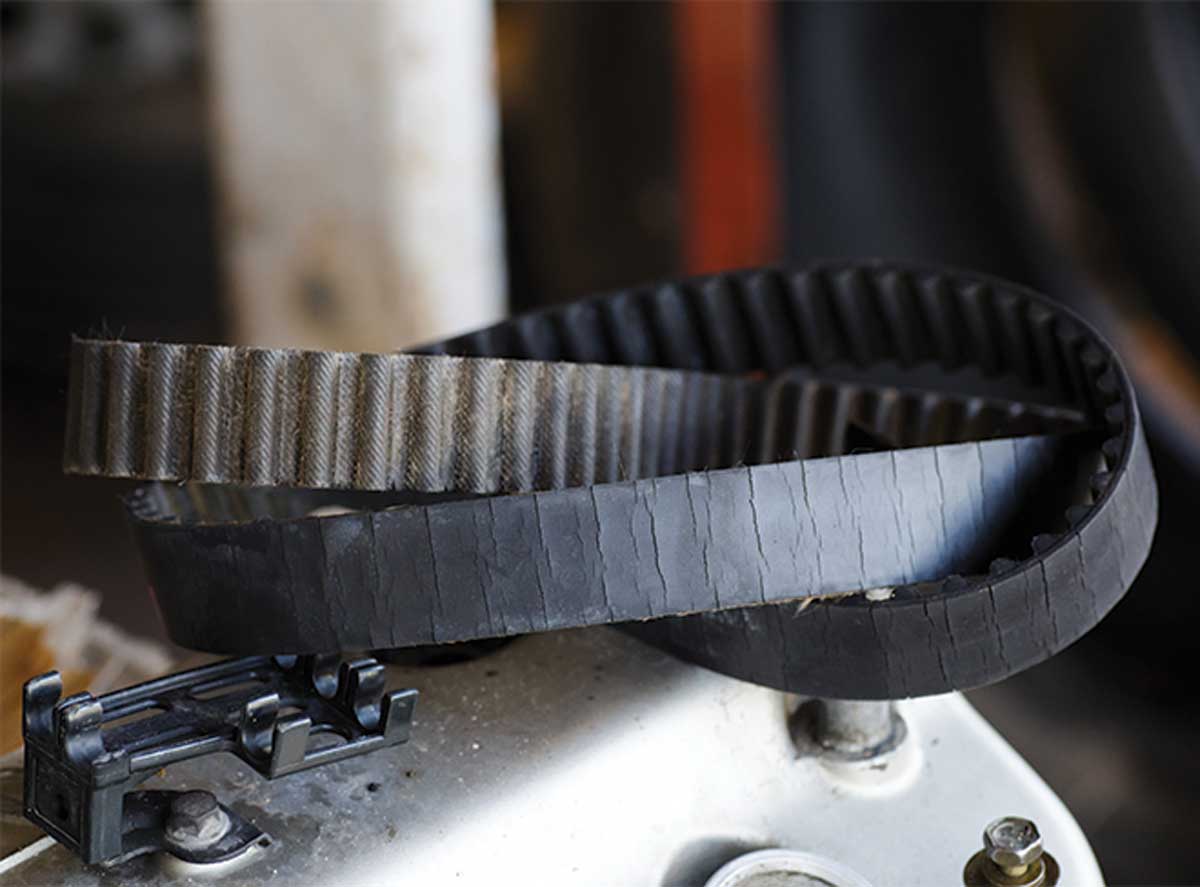Subaru Timing Belt Replacement
Timing belts in older Subaru vehicles play a crucial role in keeping the engine running smoothly and lasting longer. It is important to replace them on time to maintain peak performance.
Signs that it is time to replace your timing belt include unusual engine noises, engine misfires, and visible wear on the belt. Ignoring these warning signs can lead to serious engine damage and costly repairs.
The cost of replacing a Subaru timing belt can vary, but it’s a worthwhile investment in the long-term health of your vehicle. It is also important to consider the condition of the tensioner when replacing the belt.
SubieSmith is a trusted choice for expertly handling Subaru timing belt replacements. After replacing your timing belt, it is important to follow up with regular maintenance to keep your engine running smoothly.
Reliable Subaru Timing Belt Replacement Service by SubieSmith
A timing belt is like the conductor of an engine orchestra, making sure that the camshaft and crankshaft dance in perfect harmony to open and close the engine valves just right. For Subaru vehicles, getting a reliable timing belt replacement service is crucial to keep the engine running smoothly. This belt acts as a crucial link between the camshaft and crankshaft, ensuring they work together seamlessly in the engine block. When technicians perform a Subaru timing belt replacement service, they carefully swap out the old belt for a new one to keep everything ticking along as it should.
In addition to replacing the timing belt, our technicians also check on other related parts like the water pump. A failing water pump could cause the engine to overheat, so it is important to address these components during a Subaru timing belt replacement service to keep the engine running strong and lasting longer.
If you’re a Subaru owner looking to keep your vehicle in top shape, it is important to trust professionals who specialize in Subaru timing belt replacements. This ensures that your vehicle keeps performing at its best and stays reliable on the road.

What is a Timing Belt and How Does It Work?
Timing belts are like the unsung heroes of internal combustion engines. They make sure that the crankshaft and camshaft work together smoothly to keep your engine running like a well-oiled machine. These rubber belts play a crucial role in opening and closing the engine valves at just the right times during each cylinder’s intake and exhaust strokes. However, because they are made of rubber, timing belts can wear out over time. It is important to keep an eye on them and replace them periodically to avoid any serious engine damage if they break. The recommended interval for replacing a timing belt varies depending on the manufacturer, but it is usually around 60,000 to 100,000 miles.
Some engines use timing chains instead of timing belts. While timing chains are more durable, they still need maintenance or replacement due to wear and tear on the tensioner or idler bearing. When dealing with issues related to timing belts or chains, it is essential to follow the manufacturer’s guidelines on maintenance intervals and procedures for replacing engine belts. This will help ensure that your vehicle’s internal combustion system performs at its best and lasts a long time.
Why Timing Belt Replacement Is Important
When it comes to taking care of your engine, one important thing to keep in mind is checking and possibly replacing the timing belt. This belt is crucial for making sure the crankshaft and camshaft work together properly. If you ignore replacing the timing belt when needed, it can lead to serious problems like a broken belt causing expensive damage to your engine.
You might hear a high-pitched squeaking or ticking noise coming from the engine. If you don’t replace a worn timing belt, it could break. Ignoring these signs could end up costing you a lot of money in engine repairs due to a broken or worn-out timing belt.
Signs Your Timing Belt Needs Replacement
Timing belts in Subaru vehicles play a crucial role in syncing the engine’s crankshaft and camshaft rotation. As time goes on, these belts can wear out, potentially causing serious damage to the engine if they fail. To avoid such issues, it is important to keep an eye out for signs that indicate the need for a timing belt replacement.
One key thing to look for is any visual damage on the belt, such as cracks, fraying, or excessive wear. Additionally, pay attention to any unusual engine noises, like ticking sounds, as they could be a signal of belt issues. It is also advisable to replace the timing belt according to the manufacturer’s recommendations or around every 60,000-100,000 miles.
Regularly inspecting the belt and sticking to the recommended replacement intervals can help prevent costly repairs from a failed timing belt. When in doubt about the condition of your timing belt, it is better to be safe and opt for a timely replacement. Remember, taking care of your timing belt can ultimately help keep your Subaru running smoothly.
What Happens When the Timing Belt Breaks on My Subaru?
When your Subaru’s timing belt breaks, it can cause some serious problems. The engine may suffer significant damage, especially to parts like the pistons and valves that can get in each other’s way in certain engine designs.
If the tensioners fail, the belt can become loose, causing important engine components to get out of alignment and eventually fail. The synchronization between the crankshaft and camshaft that the timing belt provides is crucial for the engine to work correctly. If the belt breaks, this synchronization can get messed up, leading to major issues.
To prevent these costly and damaging consequences, it is important to replace your Subaru’s timing belt regularly. Neglecting to do so can end up costing you a lot more in the long run due to expensive repair rates.
Don’t forget to take care of the idler tensioner as well, as skipping this step can significantly raise the overall cost of replacing your Subaru’s timing belt.
Timing Belt Recommended Service Intervals
Service intervals for the timing belt are super important to keep your engine running smoothly and prevent any damage. Subaru suggests replacing the timing belt at specific mileage points to make sure your engine stays in top-notch condition. The timing belt replacement schedule for Subarus usually falls between 60,000 and 100,000 miles, depending on the model and year. It is really important to stick to these recommendations because as the timing belt gets older, it can wear down and cause some serious engine issues if you don’t take care of it.
When you’re getting your timing belt replaced, it is crucial to also check out other parts like the timing belt cover, tensioners, and pulleys. And don’t forget to use a high-quality rubber timing belt to make sure it lasts a long time and stays reliable. Making sure the replacement process is done right, with all components properly installed and aligned according to the manufacturer’s instructions, is key. Regular maintenance following the recommended intervals will keep your Subaru engine running smoothly and help you avoid expensive repairs from neglecting your timing belt.
DIY vs. Professional Replacement
Opting for professional replacement services can be a smart choice when it comes to replacing the timing belt in your Subaru engine. These professionals bring expertise, specialized tools, and a warranty to the table, offering peace of mind for those who may not be as familiar with the process.
While some DIY enthusiasts may attempt the task themselves to save money, the complexity of this repair job requires technical skills and attention to detail for the proper installation of crucial engine belts. Choosing a professional repair service can save time and prevent costly mistakes in the long run.
Importance of Professional Timing Belt Replacement
When you’re thinking about getting professional help, it is important to make sure that the job is done right to prevent any potential engine problems in the future. For Subaru vehicles, replacing the timing belt is a key maintenance task that should be handled by a professional. The reason why it is so crucial to have a professional do the replacement is because Subaru engines are complex, and having the timing belt installed correctly can help you avoid expensive repairs or even engine failure.
Professional technicians have the expertise and skills needed to perform precise timing belt replacements. This not only ensures that your engine performs optimally and lasts longer but also helps you avoid costly repairs later on. Plus, having a professional replace the timing belt can help you maintain warranty coverage on your Subaru model.
In the end, trusting a professional with your Subaru’s timing belt replacement means that every detail is taken care of, the manufacturer’s specifications are followed, and you can have peace of mind knowing that your vehicle’s engine is in good shape.

Why Choose SubieSmith?
When you’re looking for someone to take care of your car, it is important to think about a few things like their reputation, how much they know, and what other people have to say about them.
SubieSmith is great at working on Subaru engines, especially when it comes to replacing timing belts. Our team of certified technicians goes through tough training to make sure they can do the job right and quickly.
If you have a Subaru and need a timing belt replacement, SubieSmith can work with your schedule to get it done. It is important to replace your timing belt on time to avoid any big problems with your engine. SubieSmith focuses on Subaru engines, so they know exactly what to do and have all the tools they need to do it right.
When you choose SubieSmith for your timing belt replacement, you can trust that we’ll do a great job following the manufacturer’s guidelines. We’re all about giving your Subaru engine the best care possible, so it runs smoothly and reliably.
Subaru Timing Belt Tensioners
Understanding the importance of Subaru timing belt replacements involves recognizing the crucial role that timing belt tensioners play in this process. These tensioners are essential for maintaining the proper tension of the timing belt, which is necessary for its optimal function over time. Neglecting issues related to timing belt tensioners can result in a nightmare scenario where the engine’s timing is compromised, leading to significant damage and costly repairs.
Some key indicators to watch out for:
Being aware of these factors and promptly addressing any issues related to Subaru timing belt tensioners can help prevent major engine problems and ensure the longevity of your vehicle.
Maintenance Tips After Timing Belt Replacement
After replacing the timing belt, it is important to keep up with regular inspections and stick to the manufacturer’s maintenance schedule to ensure your engine keeps running smoothly. Make sure to follow the recommended time intervals or mileage thresholds set by the manufacturer for maintenance activities. These checks should be done annually or every few thousand miles to keep your timing belt replacement in top shape.
Vehicles with rear-drive systems like Subarus must follow this schedule to avoid premature wear or damage to important components. By following these maintenance tips after replacing the timing belt, you can extend the life of your engine and avoid costly repairs in the future. Plus, sticking to these maintenance practices is often necessary to stay within the manufacturer’s warranty period.
SubieSmith, The Trusted Expert for Timing Belt Replacement
At SubieSmith, we are experts at making sure your Subaru stays running smoothly for a long time, especially when it comes to replacing the timing belt. Every timing belt replacement at SubieSmith is done with great attention to detail, thanks to our specialized knowledge in this area.
In addition, we have connections to the suppliers that provide the parts to Subaru. This allows us to save our customers money where possible. This also ensures that your Subaru receives the highest quality components and is repaired with precision. By using the right parts and tools, a professional mechanic can extend the lifespan of your vehicle and help you avoid future issues.
Don’t compromise on your Subaru’s performance, safety, and reliability – contact us for all your Subaru needs and experience the SubieSmith difference.

